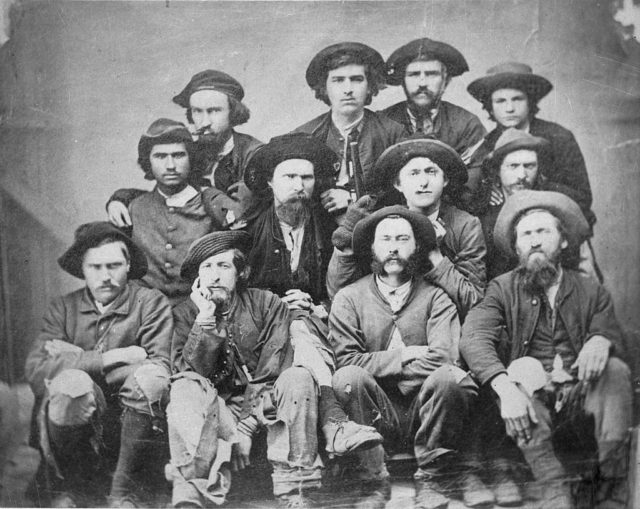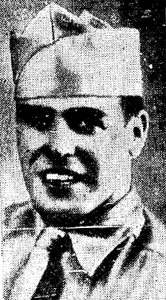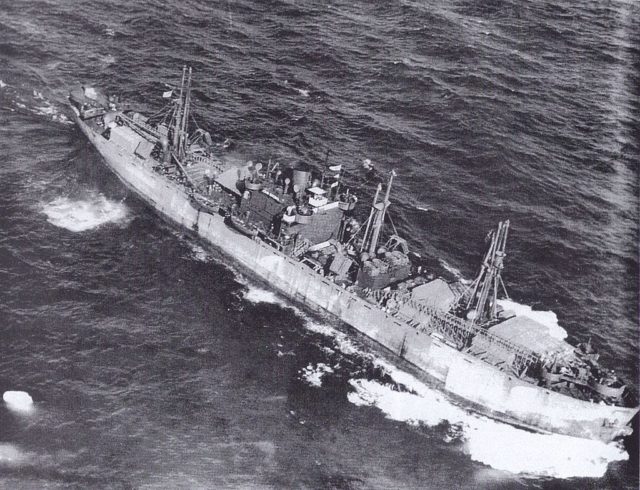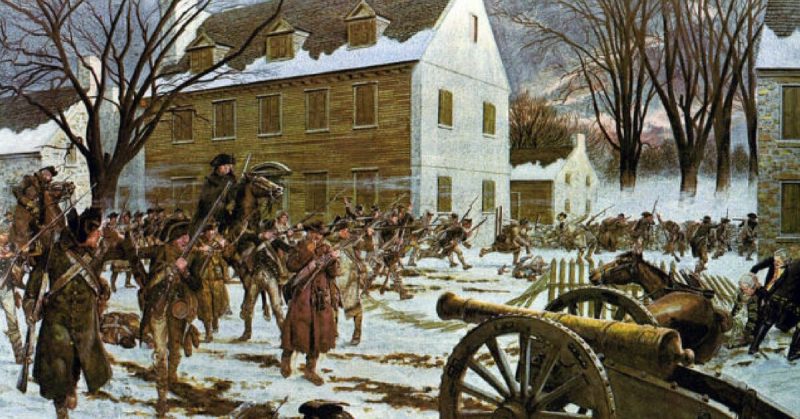1. The Beginning of the U.S. PoW System
The United States has housed prisoners of war since its inception as a country. During the Revolutionary War, the British did not believe any captured colonists should receive prisoner of war status. The colonists were deemed traitors, not enemies. They received unlawful treatment and in some instances were executed on the battlefield.
American soldiers under Washington, however, did not feel the same way. They treated all British troops with as much dignity as could be afforded. This was also applied to the Hessian troops who surrendered at the Battle of Trenton. Washington is quoted as saying, “Let them have no reason to complain of our copying the brutal example of the British Army in their treatment of our unfortunate brethren who have fallen into their hands.”
2. The Civil War Parole System
During the American Civil War, neither the Union nor the Confederacy had efficient ways to deal with scores of prisoners. Often they used the parole system adopted from Europeans. Prisoners promised not to fight until they were exchanged for a prisoner on the other side.
Once an exchange took place, both men could resume fighting again. Prisoners were briefly kept in camps until this occurred, but it was usually a quick process. However, Confederate prison populations began to soar when the Confederacy refused to value black prisoners the same as white prisoners in exchanges.
3. Camp Douglas in Chicago

Several Confederate PoW camps were famous for their poor treatment, but the Union was hardly guiltless. Camp Douglas was a Union PoW camp near Chicago, from 1863 to 1865. It offered atrocious living conditions and a death rate of up to 23 percent. Rations were often so poor, many prisoners resorted to eating rats.
Anyone found digging for food scraps was punished by being forced to walk on all fours like a dog. Other inmates were made to sit on a wooden horse with a sharp edge, and weights tied to their feet, keeping their balance until they fainted.
4. The Utah Prisoner of War Massacre

The worst massacre at a PoW camp in U.S. history occurred at Camp Salina in Utah, which was home to a few hundred German prisoners following their surrender. The camp was located within a small town, and the German prisoners had been assigned agricultural labor. For the most part, residents said they were friendly and behaved.
One night, an army private with a known hatred of Germans reported for guard duty at the camp following an evening of drinking. He waited for the former watchman to retire, then loaded a machine gun on top of a guard tower and opened fire on the sleeping Germans. He hit 30 out of 43 tents before being removed, firing 250 rounds of ammo. Six Germans were killed instantly; three died in hospital, and twenty were wounded.
5. Firm But Fair
During World War II, Germans in American PoW camps felt they received a good deal, especially compared to what they would have faced in Soviet PoW camps. Many prisoners were allowed to leave the camps on an honor system and could come and go without guards. The communities treated them well, better than they treated some minorities living freely amongst them, such as African Americans. All the prisoners were allowed to continue hobbies and occasionally received alcoholic beverages. Some camps even held parties for American girls to meet the Germans.
6. PO Box 1142
Two American PoW camps were used for interrogation during World War II, one of them being given the code name PO Box 1142. It has since become a pretty standard park in Virginia, but once housed barracks, a guard town, fence and secret bunker. The bunker held a few thousand prisoners, who were interrogated there having arrived on a bus with blackened windows. The prisoners were often German Nazis. Every part of the camp was bugged, to catch some useful information hopefully. Some detainees found the bugs, though, and used them as a sort of joke, making fun of their captors. Thus, better bugs were created, and those were not found.
The camp gave Americans one of their first experiences in modern interrogation. Many of those interrogated were German scientists who were questioned on advances in rocketry and weapons. While physical torture was not used during these interrogations, prisoners did receive threats and possibly psychological torture.
7. Liberty Ships

Many PoWs faced being killed by their own comrades before setting foot on American soil. When the U.S. sent German prisoners back to the States for detainment, they would often be transported via Liberty Ships which would otherwise be traveling empty.
These Liberty Ships were constantly at risk of being sunk by German U-boats, as the Germans would have no idea that the ships were entirely filled with German prisoners.
8. WWII Camp Recreation
German PoW camps in America allowed quite a lot of recreation. After the liberation of the Nazi concentration camps, the U.S. put together films of the atrocities found there and showed them to the German prisoners.
Prisoners at Camp Butner burned their German uniforms in response and then volunteered to fight with the Americans against Japan. An offer the U.S. considered but turned down.
Each German camp produced its own newspaper, which the Americans hoped would allow them to understand their prisoners’ views. Even toward the end of the war, however, most newspapers reflected Nazi ideologies, and many promoted a victory for Germany.
